
by Pigeon Patrol | May 3, 2021 | Bird Deterrent Products, Bird Law, pet bird, Pigeon Droppings, Pigeon Spikes, Pigeons
Many types of birds are attracted to swimming pools. As a result, swimmers might come in contact with bird droppings (poop) while in the pool. If you find bird droppings in the pool, there are a few simple steps you can take to disinfect the water and keep birds away from the pool.
Can bird droppings in the pool spread germs to swimmers?
Many germs that might be found in bird droppings can infect humans. Duck and goose droppings, in particular, might contain germs such as E. coli, Salmonella, Campylobacter, or Cryptosporidium (“Crypto” for short).
Most germs in bird droppings are killed by chlorine within minutes in a well-maintained pool.
The germ Crypto, however, has a tough outer shell that allows it to survive for a long time in the environment. Crypto can survive for days even in properly chlorinated pools. Currently, CDC is not aware of any evidence of Crypto being spread directly from birds to humans.
What should I do if I find bird droppings in the pool?
Pool operators and owners should respond to finding bird droppings in the pool the same way they would respond to finding formed human feces (poop) in the pool. The Healthy Swimming Program’s Fecal Incident Response Recommendations Cdc-pdf[PDF – 4 pages] provide step-by-step guidance on how to properly decontaminate the water in these situations.
Follow these steps to remove bird droppings and disinfect the water:
-
Close the pool to swimmers.
-
Put on disposable gloves.
-
Remove the bird droppings using a net or bucket. Do not vacuum the droppings from the pool.
-
Clean off any debris or dirt from the item used to remove the bird droppings.
-
Disinfect the item used to remove the droppings by immersing it in the pool during the 30-minute disinfection time described below.
-
Remove and dispose of gloves.
-
Wash your hands thoroughly with soap and water immediately.
-
Raise the free chlorine concentration to, or maintain it at, 2 parts per million (ppm); maintain the pH level at 7.5 or less; keep the temperature at 77°F (25°C) or higher. The free chlorine and pH should remain at these levels for 30 minutes.
-
Confirm that the filtration system is operating properly.
How can I keep birds away from the pool area?
The following steps can help encourage birds, other than ducks and geese (more information on ducks and geese is provided below), to leave the swimming pool area:
-
Remove plants that produce edible nuts, fruits, and berries.
-
Remove bird feeders.
-
Trim or remove trees and shrubs to limit branches hanging around or over the pool that can be used by roosting birds.
How can I keep ducks and geese away from the pool area?
Do not feed ducks or geese; providing food attracts them and encourages them to return. Many types of ducks and geese eat grass, so reducing the area of grass lawns around the swimming pool or putting up barriers that prohibit movement between swimming pools and grass lawns, such as fences and hedges, might also help. Removing domestic ducks and geese from the pool area can also help decrease the likelihood that wild ducks and geese will be attracted to the area.
The U.S. Department of Agriculture has additional information on how to manage ducks and geese (also known as waterfowl) in their document Assistance with Waterfowl Damage. Cdc-pdf[PDF – 3 pages]External
What can I do to get rid of ducks and geese already in the pool area?
In the United States, most birds, including ducks and geese, are protected by the Federal Migratory Bird Treaty Act and state laws. Local laws might also apply. Therefore, legal options for dealing with birds are limited and may require a permit. Consult the U.S. Fish and Wildlife ServicesExternal and your state wildlife agencyExternal for more information.
Pigeon Patrol Products & Services is the leading manufacturer and distributor of bird deterrent (control) products in Canada. Pigeon Patrol products have solved pest bird problems in industrial, commercial, and residential settings since 2000, by using safe and humane bird deterrents with only bird and animal friendly solutions. At Pigeon Patrol, we manufacture and offer a variety of bird deterrents, ranging from Ultra-flex Bird Spikes with UV protection, Bird Netting, 4-S Bird Gel and the best Ultrasonic and audible sound devices on the market today.
Voted Best Canadian wholesaler for Bird Deterrent products ten years in a row.
Contact us at 1- 877– 4– NO-BIRD, (604) 585-9279 or visit our website at www.pigeonpatrol.ca
Pigeon/Pigeon Patrol / Pigeons Roosting / Vancouver Pigeon Control /Bird Spikes / Bird Control / Bird Deterrent / Pigeon Deterrent? Surrey Pigeon Control / Pest /Seagull deterrent / Vancouver Pigeon Blog / Birds Inside Home / Pigeons in the cities / Ice Pigeons/ What to do about pigeons/ sparrows , Damage by Sparrows, How To Keep Raccoons Away, Why Are Raccoons Considered Pests/ De-fence / Pigeon Nesting/ Bird Droppings / Pigeon Dropping/ woodpecker control/ Professional Bird Control Company/ Keep The Birds Away/ Birds/rats/ seagull/pigeon/woodpecker/ dove/sparrow/pidgeon control/pidgeon problem/ pidgeon control/flying rats/ pigeon Problems/ bird netting/bird gel/bird spray/bird nails/ bird guard
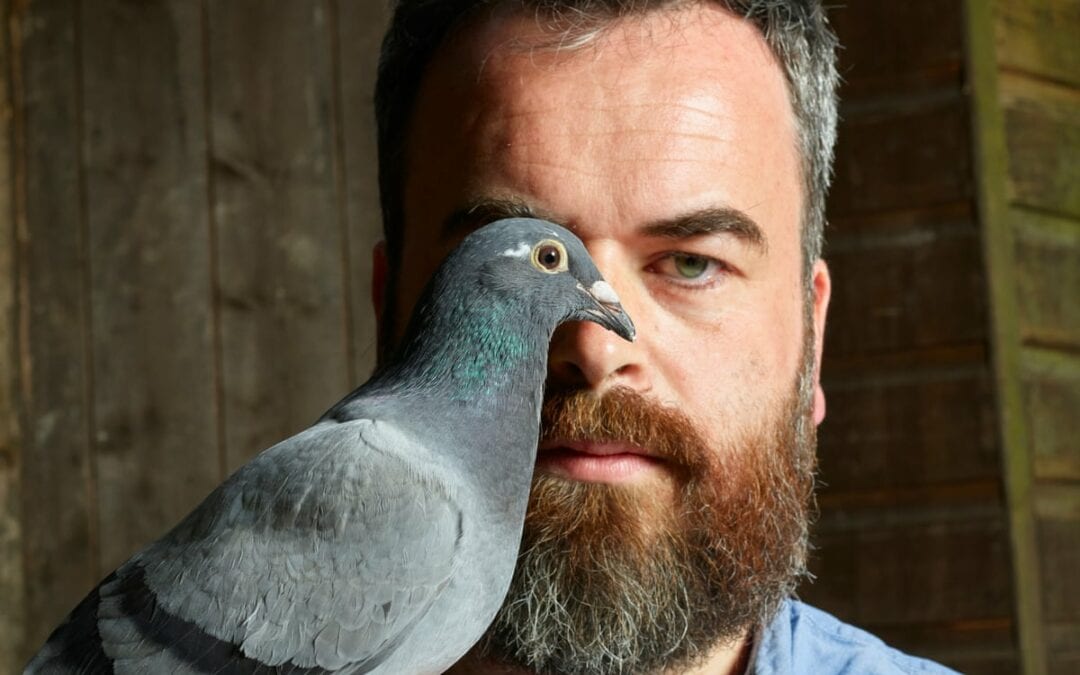
by Pigeon Patrol | May 3, 2021 | Bird Law, Bird Spikes, history of pigeons, Pigeons, Pigeons in the News
I admit that topic is a bit off my usual
Brain Sense
beat, but occasionally a piece of research comes along that is just too intriguing to pass by. Such is the case with a new report out of the University of Kentucky, published this week in the
Proceedings of the Royal Society
(UK). The study’s lead author, psychology professor Thomas Zentall, studied some pigeon gamblers and came up with some intriguing insights into human gamblers.
Zentall and collaborator Jessica Stagner set pigeons up in cages and let the birds peck at lights to obtain rewards of food pellets. If the pigeons pecked on the left, they received a green or a red light; after 10 seconds, the red light yielded 10 pellets but the green light yielded nothing. Because the odds were stacked at 20 percent–which is much more generous than your average casino–the pigeons averaged 2 pellets per peck if they pecked on the left.
If they pecked to the right, however, they saw yellow or blue lights, which both yielded 3 pellets of food per trial. Same every time. Sure thing.
So which would you choose: a guaranteed 3 or the remote possibility of a 10 (with the odds stacked against you)? Seems most pigeons behave like human gamblers. They don’t go for the sure thing. Most of Zentall’s experimental birds consistently chose the left side, apparently motivated by some bird-brained hope that they would receive the 10 pellets, even though 0 was a 4:1 favorite. “It’s more efficient not to gamble, and the likelihood of winning is low, but pigeons do it anyway,” Zentall says. “And so do people.”
“There’s a basic behavioral, biological process involved that probably affects many different species, and it doesn’t require the excitement of a casino, the misunderstanding of the likelihood of winning, social reinforcement or the publicity of winners,” Zentall says. “These factors may help, but that’s not it. Look at the pigeons.”
Zentall is also looking at the pigeons to try to find out why some pigeons, like some people, eschew gambling. (Yes, a few, wise pigeons peck to the right.) “Most of the time, people who aren’t terribly happy with what they’re doing choose to gamble because it’s exciting to them and other things generally aren’t,” says Zentall, and pigeons may be no different. Zentall thinks boredom may be an important motivator for gambling. His pigeons are less likely to gamble after spending time in a room playing with toys and other pigeons.
“We can understand the basis for gambling,” Zentall says, “but why has this evolved in people and in animals?” The answer may lie in the animal’s sense of control. “In nature, probability isn’t constant,” he said. “Animals are attracted to stimuli that make it easy to predict the availability of food and approaching these stimuli often makes their occurrence more likely. In lab conditions, this isn’t the case. . . . In addition, humans remember the wins and not the losses, which has functional value in nature. . . . Animals too, don’t remember where they didn’t find food, but do remember where they did.”
Thus, gambling may have survival value in nature, but not in the casino.
Pigeon Patrol Products & Services is the leading manufacturer and distributor of bird deterrent (control) products in Canada. Pigeon Patrol products have solved pest bird problems in industrial, commercial, and residential settings since 2000, by using safe and humane bird deterrents with only bird and animal friendly solutions. At Pigeon Patrol, we manufacture and offer a variety of bird deterrents, ranging from Ultra-flex Bird Spikes with UV protection, Bird Netting, 4-S Bird Gel and the best Ultrasonic and audible sound devices on the market today.
Voted Best Canadian wholesaler for Bird Deterrent products ten years in a row.
Contact us at 1- 877– 4– NO-BIRD, (604) 585-9279 or visit our website at www.pigeonpatrol.ca
Pigeon/Pigeon Patrol / Pigeons Roosting / Vancouver Pigeon Control /Bird Spikes / Bird Control / Bird Deterrent / Pigeon Deterrent? Surrey Pigeon Control / Pest /Seagull deterrent / Vancouver Pigeon Blog / Birds Inside Home / Pigeons in the cities / Ice Pigeons/ What to do about pigeons/ sparrows , Damage by Sparrows, How To Keep Raccoons Away, Why Are Raccoons Considered Pests/ De-fence / Pigeon Nesting/ Bird Droppings / Pigeon Dropping/ woodpecker control/ Professional Bird Control Company/ Keep The Birds Away/ Birds/rats/ seagull/pigeon/woodpecker/ dove/sparrow/pidgeon control/pidgeon problem/ pidgeon control/flying rats/ pigeon Problems/ bird netting/bird gel/bird spray/bird nails/ bird guard
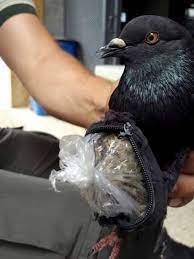
by Pigeon Patrol | May 3, 2021 | Bird Law, Bird Spikes, Doves, Pigeon Control, Pigeon Patrol's Services
Officials believe an inmate at a jail in Costa Rica trained a feathered friend to smuggle cocaine and cannabis in a pouch.
A pigeon smuggling cocaine and cannabis into a prison in Costa Rica has been caught by guards.
The bird was seen landing in the central concourse of the medium security La Reforma jail, in San Rafael de Alajuela, where it was taken into custody.
The drugs were contained in a small zipped up pouch strapped to the animals chest.
About 14g of cocaine and at least the same amount of cannabis were inside wrapped in plastic.
Costa Rica’s Ministry of Justice and Peace released the animal’s mugshot under the headline caption “narcopaloma”, meaning “drugs dove”, and listing the date of the animals detention.
Realidad7 reported the drugs had a street value of around £180 ($281).
Prison officials said they believe the drugs were destined for use by an inmate who may have trained the pigeon to act as a courier.
Director of the Penitentiary Police, Paul Bertozzi, told Spanish news agency Efe that it showed the need to be vigilant.
“Drug traffickers are using unimaginable ways to achieve their macabre atrocities,” he said.
“This (use of a pigeon) is nothing new. In the past (the traffickers) have used cats and dogs to pass drugs to prisoners. Now it seems they are using pigeons to carry in their wares from the outside.”
Although it is the first time the Costa Rican authorities said they had come across the practice, it has previously been reported in Argentina in 2013 and Colombia in 2011.
The pigeon was later taken to a zoo where it was expected to remain behind the bars of a cage.
Biologist Oscar Ramirez told Realidad7 that pigeons can be trained to travel several miles with small loads.
During the Second World War, more than 250,000 homing pigeons were used to transport messages between front line Allied troops and top brass, according to the Royal Pigeon Racing Association.
Pigeon Patrol Products & Services is the leading manufacturer and distributor of bird deterrent (control) products in Canada. Pigeon Patrol products have solved pest bird problems in industrial, commercial, and residential settings since 2000, by using safe and humane bird deterrents with only bird and animal friendly solutions. At Pigeon Patrol, we manufacture and offer a variety of bird deterrents, ranging from Ultra-flex Bird Spikes with UV protection, Bird Netting, 4-S Bird Gel and the best Ultrasonic and audible sound devices on the market today.
Voted Best Canadian wholesaler for Bird Deterrent products ten years in a row.
Contact us at 1- 877– 4– NO-BIRD, (604) 585-9279 or visit our website at www.pigeonpatrol.ca
Pigeon/Pigeon Patrol / Pigeons Roosting / Vancouver Pigeon Control /Bird Spikes / Bird Control / Bird Deterrent / Pigeon Deterrent? Surrey Pigeon Control / Pest /Seagull deterrent / Vancouver Pigeon Blog / Birds Inside Home / Pigeons in the cities / Ice Pigeons/ What to do about pigeons/ sparrows , Damage by Sparrows, How To Keep Raccoons Away, Why Are Raccoons Considered Pests/ De-fence / Pigeon Nesting/ Bird Droppings / Pigeon Dropping/ woodpecker control/ Professional Bird Control Company/ Keep The Birds Away/ Birds/rats/ seagull/pigeon/woodpecker/ dove/sparrow/pidgeon control/pidgeon problem/ pidgeon control/flying rats/ pigeon Problems/ bird netting/bird gel/bird spray/bird nails/ bird guard
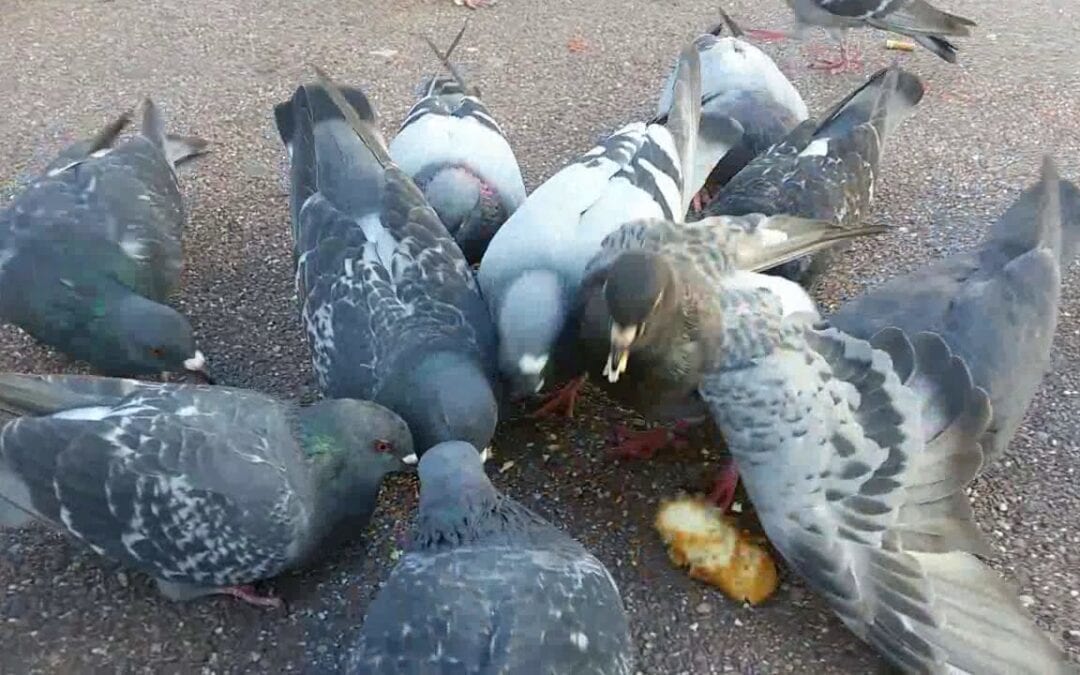
by Pigeon Patrol | Apr 26, 2021 | Bird Law, Pigeon Control, Pigeon Patrol's Services, Pigeon Predators
Commonly known as Pigeons, Rock Pigeons are often considered a nuisance by some city officials and some farm businesses.
In cities they congregate in large flocks and can create messes with their droppings.
On farms, eating grains and possible harm to livestock through bacteria and viruses are concerns about these birds.
Many pigeon deterents are available online to prevent nesting in areas they’re not wanted.
Introduced into North America from Europe in the 1600’s, these birds have been associated with humans for thousands of years.
Rock Doves are thought to have been the first domesticated bird, raised for meat as far back as the time of the ancient Egyptians.
Description
Pigeons have different colors due to breeding by humans. They are the descendants of the wild Rock Dove of Europe.
About 13 inches in length with a dark gray head, iridescent neck, with a light gray back and 2 dark wing bars.
Mating – Breeding Habits
Like Mourning Doves, pairs are monogamous, often breeding in consecutive seasons for as long as both birds of a pair live.
Most will attempt to raise several broods each year. Sometimes as many as four or five broods will be raised in a single year.
The breeding season of these birds can be all year provided climate conditions allow. There seems to be some slowing down during the winter months.
Nesting Habits
The nesting habits of Pigeons are a bit unique. The male chooses a site in view of the female, selecting one stick and bringing it back, lays it in front of his mate.
The female who stays at the nesting site accepts the sticks the male brings to her and places them underneath her.
The nest of these birds can be found along building ledges, rafters, beams, under bridges or inside barns.
The nest is saucer-like in shape and made of stems and leaves.
The female may sit on the nest a day or two before the first egg is laid. Generally 2 white eggs are laid.
Both the male and female will incubate but the female will spend the most time on the eggs since she will be on the nest from mid-afternoon to mid-morning.
Incubation last for about 18 days. When the eggs hatch the young are covered in yellow down.
Young pigeons in the nest are referred to as “squabs”
Initially, the squabs are fed what is referred to as crop milk. This is a regurgitated thick liquid food that comes from the parents crops.
At about 10 days the squabs are fed increasing amounts of the food types that adults eat and are no longer dependent on crop milk.
The young will double in size in a day and a half. Making them one of the fastest growing vertebrate in the world.
Within 2 weeks the flight feathers begin to emerge and by week 3 the squabs are covered in feathers.
The tail and full feathering is completed by the 28th day and their weight is that of an adult.
The young will now leave the nest and the male will teach them what they need to know to survive.
This is 10 – 15 days longer than most of our backyard birds.
The female will begin a new clutch and this cycle will repeat about every 30 days when weather cooperates.
Do Pigeons Reuse the Same Nest
It’s more accurate to say that the same nest site is used as the second and subsequent nest are built on top of the previous nest.
Nest that are several years old can measure out to be as much as 7 inches high and 19 inches wide.
Feeding Habits – What Pigeons Eat
Rock Pigeons feed on the ground. To prevent seed spoilage and to keep the birds healthy a ground feeder is recommended for all ground feeding birds.
The best types of food to offer these birds are properly mixed seeds specifically made for doves and pigeons.
For more information on seeds and photos of each, please see our
Bird Seed Page.Predators
The primary preadators of pigeons include: man, peregrin falcon, and cats. Nest predators include oppossums, raccoons, crows and owls. Hawks will capture perching birds.
Are Pigeons Smart Birds?
According to Professor Richard J. Herrnstein at the Harvard Psychological Laboratories they are. Pigeons were smart enough to learn all the letters of the english alphabet.
In another study, Pigeons were able to recognize themselves in a mirror. This makes them one of six species and the only non-mammal to be able to do so.
So yes, Pigeons are a pretty smart bird.
What is the Lifespan of Pigeons?
Pigeons may live 3 – 6 years in the wild with the average being 3 – 4 years. In captivity they have lived as long as 15 years depending on the care given to the bird.
Pigeons in History
During the world wars, Homing Pigeons were trained to return to a loft in the UK.
Troops then took the pigeons with them and used them to send messages when radio and written communication were being intercepted.
Pigeon Fun Facts
Pigeons have the ability to see about 26 miles.
When fully feather, adult pigeons have around 10,000 feathers.
There are approximately 400 million pigeons in the world.
Pigeon Patrol Products & Services is the leading manufacturer and distributor of bird deterrent (control) products in Canada. Pigeon Patrol products have solved pest bird problems in industrial, commercial, and residential settings since 2000, by using safe and humane bird deterrents with only bird and animal friendly solutions. At Pigeon Patrol, we manufacture and offer a variety of bird deterrents, ranging from Ultra-flex Bird Spikes with UV protection, Bird Netting, 4-S Bird Gel and the best Ultrasonic and audible sound devices on the market today.
Voted Best Canadian wholesaler for Bird Deterrent products ten years in a row.
Contact us at 1- 877– 4– NO-BIRD, (604) 585-9279 or visit our website at www.pigeonpatrol.ca
Pigeon/Pigeon Patrol / Pigeons Roosting / Vancouver Pigeon Control /Bird Spikes / Bird Control / Bird Deterrent / Pigeon Deterrent? Surrey Pigeon Control / Pest /Seagull deterrent / Vancouver Pigeon Blog / Birds Inside Home / Pigeons in the cities / Ice Pigeons/ What to do about pigeons/ sparrows , Damage by Sparrows, How To Keep Raccoons Away, Why Are Raccoons Considered Pests/ De-fence / Pigeon Nesting/ Bird Droppings / Pigeon Dropping/ woodpecker control/ Professional Bird Control Company/ Keep The Birds Away/ Birds/rats/ seagull/pigeon/woodpecker/ dove/sparrow/pidgeon control/pidgeon problem/ pidgeon control/flying rats/ pigeon Problems/ bird netting/bird gel/bird spray/bird nails/ bird guard
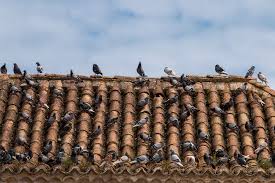
by Pigeon Patrol | Apr 26, 2021 | Bird Law, Pigeon Control, Pigeon Predators, Pigeon Spikes
Probably the second-worst thing that ever happened to pigeons was Woody Allen calling them “rats with wings” in 1980, prompting a bad reputation that the birds just haven’t been able to get rid of. (The worst thing that ever happened to pigeons was the extinction of the carrier pigeon in the late 1800s/early 1900s. These pigeons once existed in such multitudes, they would darken the sky for hours as they flew overhead; sadly, their sheer numbers led to a carefree attitude in hunting them, and they went from a population of millions to zero in a short time span.)
Contrary to popular belief, pigeons are quite interesting, useful animals. They were domesticated thousands of years ago (Darwin, in fact, was a little obsessed with pigeons), can be trained as athletes (called “racing pigeons”), mate for life (aww!), and have evolved to be able to digest a much wider variety of food than their ancestors. More recently, scientists in the U.S. and England have utilized pigeons to help collect data on air quality by strapping tiny, pigeon-sized backpacks onto the pigeons’ backs and tracking the data as the birds fly around.
They’re more reliable than your car’s GPS
Probably one of the most famous cool things about pigeons is their ability to always find their way home. You’ve probably heard of “homing pigeons” before, right? But how do they do it? Past studies have investigated the roles of olfactory cues, sun and magnetic compasses, and the use of long, linear landmarks such as roads, railway lines, and rivers. Interestingly enough, despite hundreds of years of research on the matter, there still doesn’t appear to be a consensus on how exactly pigeons have such an uncanny sense of direction.
In 2013, a study in the Journal of Experimental Biology found that homing pigeons use low-frequency sound waves, called infrasound waves, to make an acoustic mental map of their location. The researcher examined 14 years’ worth of data from 45,000 pigeons to determine that the only times the birds got lost were when these infrasound waves, due to wind or difficult terrain, were unable to reach the pigeons’ home loft. This sound block appears to have inhibited the birds’ ability to figure out their orientation relative to home, indicating that sound plays an important role in their ability to find their way home.
But in a 2015 study in Proceedings of the Royal Society B, scientists found that vision, too, plays a major role in homing pigeons’ abilities. The left and right halves of bird brains are thought to act more autonomously than ours, because they don’t have a corpus callosum, the part of the brain that passes information between brain hemispheres. So for this study, the researchers placed eye patches on first one, then the other, of the birds’ eyes to see how limited vision might affect their sense of direction. Two groups of birds were trained to return home, first with the left eye covered or first with the right eye covered. The pigeons formed new routes after switching eyes, meaning that their brain hemispheres do indeed learn and act independently.
It’s worth nothing that, despite having full use of both eyes and ears, plus the ability to read a map, I can recount multiple instances wherein I panicked because I was “lost,” only to find out I was within two or three blocks of home. Multiple instances, you guys. I would be a terrible pigeon.
They can detect cancer
So, pigeons have built-in GPSs. You still seem unimpressed. Well, did you know that pigeons can also detect cancer? Aha, now I’ve got your attention!
It’s true: a 2015 study in PLOS ONE found that pigeons, with a little training, can distinguish breast tissue from tumors on biopsy slides. The researchers showed 16 pigeons touchscreen images of microscope slides of either benign or malignant breast tissue, and within two weeks, the pigeons had achieved 85% accuracy in identifying malignancies. Interestingly, if the assessments of multiple pigeons on each slide were added together (the researchers called this “flock-sourcing,” which may be the cutest adaption of crowdsourcing I’ve ever seen), accuracy reached 99%. The pigeons had a harder time identifying suspicious masses in mammogram images, which, to be fair, is something doctors have trouble with too, even after of years of training.
Nonetheless, this suggests that pigeons could be used as trained medical image observers and could help researchers figure out better ways to train pathologists and computer systems by determining the impact of color, contrast, brightness, and image compression artifacts on diagnostic performance.
They’re highly intelligent
Which brings me back to my original point: pigeons are actually highly intelligent creatures. A 1995 study in the Journal of the Experimental Analysis of Behavior found that pigeons could distinguish between paintings by Monet and Picasso (though the study didn’t determine which artist the pigeons preferred, so we may never know if they’re more into cubism or impressionism). A 2008 study in Animal Cognition found that pigeons, like large-brained primates, recognize themselves in mirrors and videos.
In a study presented at the 2011 Society for Experimental Biology Annual Conference, researchers determined that feral, untrained pigeons can recognize individual people and are not fooled by a change of clothes. Two researchers, of similar build and skin color, wearing different-colored lab coats that covered most of their bodies, fed pigeons in a park. One of the researchers ignored the pigeons, whereas the other researcher shooed the pigeons away; in subsequent sessions, even when the “hostile” researcher acted neutrally toward the pigeons or switched lab coats with the other researcher, the pigeons recognized and avoided the “hostile” researcher.

Lest you think this is a one-off occurrence, a 2012 study in Avian Biology Research confirmed that pigeons can recognize a person they have encountered before, based strictly on facial characteristics. The researchers trained a group of pigeons to distinguish between photographs of familiar and unfamiliar objects. These pigeons, along with a control group that had not been trained, were then shown photographs of pairs of human faces, one familiar and one the pigeons had not previously seen. The trained birds were able to recognize and classify the familiar people using only their faces, whereas the birds without prior training failed.
So, to recap, pigeons can identify cancer, recognize human faces, and find their way home. Which leaves me with one burning question: do they also play fetch?
Pigeon Patrol Products & Services is the leading manufacturer and distributor of bird deterrent (control) products in Canada. Pigeon Patrol products have solved pest bird problems in industrial, commercial, and residential settings since 2000, by using safe and humane bird deterrents with only bird and animal friendly solutions. At Pigeon Patrol, we manufacture and offer a variety of bird deterrents, ranging from Ultra-flex Bird Spikes with UV protection, Bird Netting, 4-S Bird Gel and the best Ultrasonic and audible sound devices on the market today.
Voted Best Canadian wholesaler for Bird Deterrent products ten years in a row.
Pigeon/Pigeon Patrol / Pigeons Roosting / Vancouver Pigeon Control /Bird Spikes / Bird Control / Bird Deterrent / Pigeon Deterrent? Surrey Pigeon Control / Pest /Seagull deterrent / Vancouver Pigeon Blog / Birds Inside Home / Pigeons in the cities / Ice Pigeons/ What to do about pigeons/ sparrows , Damage by Sparrows, How To Keep Raccoons Away, Why Are Raccoons Considered Pests/ De-fence / Pigeon Nesting/ Bird Droppings / Pigeon Dropping/ woodpecker control/ Professional Bird Control Company/ Keep The Birds Away/ Birds/rats/ seagull/pigeon/woodpecker/ dove/sparrow/pidgeon control/pidgeon problem/ pidgeon control/flying rats/ pigeon Problems/ bird netting/bird gel/bird spray/bird nails/ bird guardContact us at 1- 877– 4– NO-BIRD, (604) 585-9279 or visit our website at www.pigeonpatrol.ca
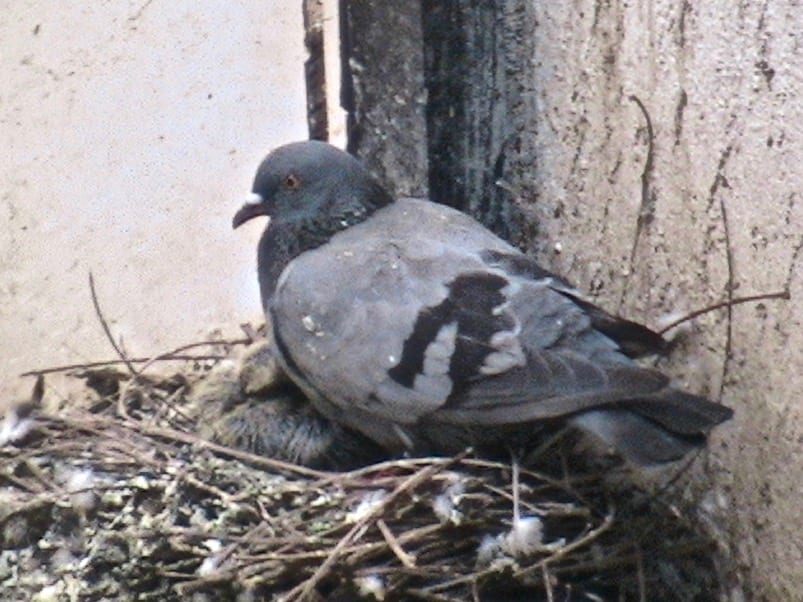
by Pigeon Patrol | Apr 26, 2021 | Bird Law, Pigeons
Pigeons can categorize and name both natural and human-made objects—and not just a few. The birds in a new study categorized 128 photographs into 16 categories.
The finding suggests a similarity between how pigeons learn the equivalent of words and the way children do, according to Ed Wasserman, professor of psychology at the University of Iowa and corresponding author of the study.
“Unlike prior attempts to teach words to primates, dogs, and parrots, we used neither elaborate shaping methods nor social cues,” Wasserman says of the study, which appears online in the journal Cognition. “And our pigeons were trained on all 16 categories simultaneously, a much closer analog of how children learn words and categories.”
For researchers like Wasserman, who has been studying animal intelligence for decades, this latest experiment is further proof that animals—whether primates, birds, or dogs—are smarter than once presumed and have more to teach scientists.
“It is certainly no simple task to investigate animal cognition; But, as our methods have improved, so too have our understanding and appreciation of animal intelligence,” he says.
“Differences between humans and animals must indeed exist: many are already known. But, they may be outnumbered by similarities. Our research on categorization in pigeons suggests that those similarities may even extend to how children learn words.”
PECK THE SYMBOL
Wasserman says the pigeon experiment comes from a project published in 1988 and featured in the New York Times in which University of Iowa researchers discovered pigeons could distinguish among four categories of objects.
This time, the researchers used a computerized version of the “name game” in which three pigeons were shown 128 black-and-white photos of objects from 16 basic categories: baby, bottle, cake, car, cracker, dog, duck, fish, flower, hat, key, pen, phone, plane, shoe, tree.
The birds then had to peck on one of two different symbols: the correct one for that photo and an incorrect one that was randomly chosen from one of the remaining 15 categories. The pigeons not only succeeded in learning the task, but they also reliably transferred the learning to four new photos from each of the 16 categories.
SMARTER THAN YOUR AVERAGE BIRD
Pigeons have long been known to be smarter than your average bird—or many other animals, for that matter. Among their many talents, pigeons have a “homing instinct” that helps them find their way home from hundreds of miles away, even when blindfolded.
They have better eyesight than humans do and have been trained by the US Coast Guard to spot orange life jackets of people lost at sea. They carried messages for the US Army during World Wars I and II, saving lives and providing vital strategic information.
The researchers say their expanded experiment represents the first purely associative animal model that captures an essential ingredient of word learning—the many-to-many mapping between stimuli and responses.
“Ours is a computerized task that can be provided to any animal, it doesn’t have to be pigeons,” says psychologist Bob McMurray, a coauthor of the study. “These methods can be used with any type of animal that can interact with a computer screen.”
HOW CHILDREN LEARN
McMurray says the research shows the mechanisms by which children learn words might not be unique to humans.
“Children are confronted with an immense task of learning thousands of words without a lot of background knowledge to go on,” he says. “For a long time, people thought that such learning is special to humans. What this research shows is that the mechanisms by which children solve this huge problem may be mechanisms that are shared with many species.”
Wasserman acknowledges the recent pigeon study is not a direct analogue of word-learning in children and more work needs to be done. Nonetheless, the model used in the study could lead to a better understanding of the associative
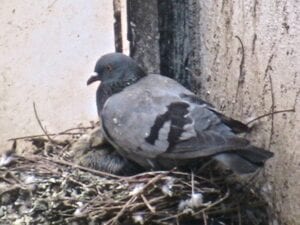
principles involved in children’s word learning.
“That’s the parallel that we’re pursuing,” he says, “but a single project—however innovative it may be—will not suffice to answer such a provocative question.”
National Institute of Mental Health, National Eye Institute, and National Institute of Deafness and Other Communication Disorders supported the research.
Pigeon Patrol Products & Services is the leading manufacturer and distributor of bird deterrent (control) products in Canada. Pigeon Patrol products have solved pest bird problems in industrial, commercial, and residential settings since 2000, by using safe and humane bird deterrents with only bird and animal friendly solutions. At Pigeon Patrol, we manufacture and offer a variety of bird deterrents, ranging from Ultra-flex Bird Spikes with UV protection, Bird Netting, 4-S Bird Gel and the best Ultrasonic and audible sound devices on the market today.
Voted Best Canadian wholesaler for Bird Deterrent products ten years in a row.
Contact us at 1- 877– 4– NO-BIRD, (604) 585-9279 or visit our website at www.pigeonpatrol.ca
Pigeon/Pigeon Patrol / Pigeons Roosting / Vancouver Pigeon Control /Bird Spikes / Bird Control / Bird Deterrent / Pigeon Deterrent? Surrey Pigeon Control / Pest /Seagull deterrent / Vancouver Pigeon Blog / Birds Inside Home / Pigeons in the cities / Ice Pigeons/ What to do about pigeons/ sparrows , Damage by Sparrows, How To Keep Raccoons Away, Why Are Raccoons Considered Pests/ De-fence / Pigeon Nesting/ Bird Droppings / Pigeon Dropping/ woodpecker control/ Professional Bird Control Company/ Keep The Birds Away/ Birds/rats/ seagull/pigeon/woodpecker/ dove/sparrow/pidgeon control/pidgeon problem/ pidgeon control/flying rats/ pigeon Problems/ bird netting/bird gel/bird spray/bird nails/ bird guard

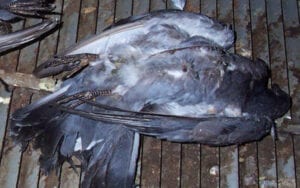
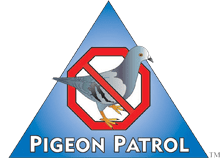




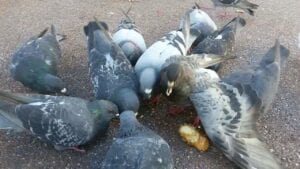


 principles involved in children’s word learning.
principles involved in children’s word learning.